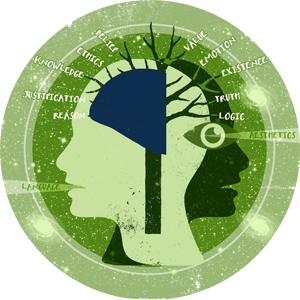![[Gnarled Roots]](images/gnarledroots-thumb.jpg) |
Syllabus
Teaching Methods for Interdisciplinary Courses
|
| Contact Information |
| |
Professor Bob Sandmeyer
Assistant Professor of Philosophy
Environmental & Sustainability
Studies Faculty
University of Kentucky
Syllabus (PDF)
|
Email: bob.sandmeyer@uky.edu
WeChat ID: bobsand

|
| Course Description |
| |
This course introduces faculty to the pedagogy unique to interdisciplinary classes. Using the Environmental & Sustainability Studies program at the University of Kentucky as our primary example, faculty in this class will study the inherent relationship between program design and effective construction of class outcomes. The focus of this class will center on the development and application of learning outcomes that advance interdisciplinary program goals at the classroom level and practical methods to accomplish these goals. Much of the class will model interactive dynamic classroom design. Consequently, participants will engage in the active learning techniques studied in the course. A secondary goal of the class will be to improve oral English communication skills based on task-based, active-learning methodologies. Participants will also work to improve their classroom communication and presentation skills.
Please bring a computer with you to each class. This will facilitate class discussion and allow us to work together with the course resources most efficiently. If it is not possible to bring a computer with you to class, please let me know via email or WeChat. |
| Learning Outcomes |
| |
Name and order action words for continuum of cognitive complexity identified in Bloom's taxonomy.
Demonstrate understanding of learning outcomes for program and course design.
Practice dynamic classroom learning techniques.
Construct effective interdisciplinary program design parameters as well as effective course syllabi based on identified learning outcomes.
|
| Assessment |
| |
Given the orientation to faculty in this course, traditional assessment will be replaced by in-class exercises that consolidate comprehension of material and expertise of techniques studied.
|
| Course Structure |
| |
- Interdisciplinary Program Design: Learning Objectives at the Program Level
- Two Case Studies
- The disciplinary degree: Philosophy
- The interdisciplinary degree: Environmental and Sustainability Studies
- Classroom project: interdisciplinary program construction
- Modeling student-centered thinking
- Learning objectives at the course level
- Course design
- The concept of student learning objectives: Bloom's taxonomy
- Course objectives
- General vs. disciplinary-specific courses
- Core concepts
- Specific knowledge
- Communication
- Application & research
- Interdisciplinary courses
- Introductory
- Reinforcing
- Application/emphasis
- Teaching Techniques
- Reading
- Good reading is re-reading
- Writing
- Good writing is re-writing
- Classroom discussion
|
![[Gnarled Roots]](images/gnarledroots-thumb.jpg)




